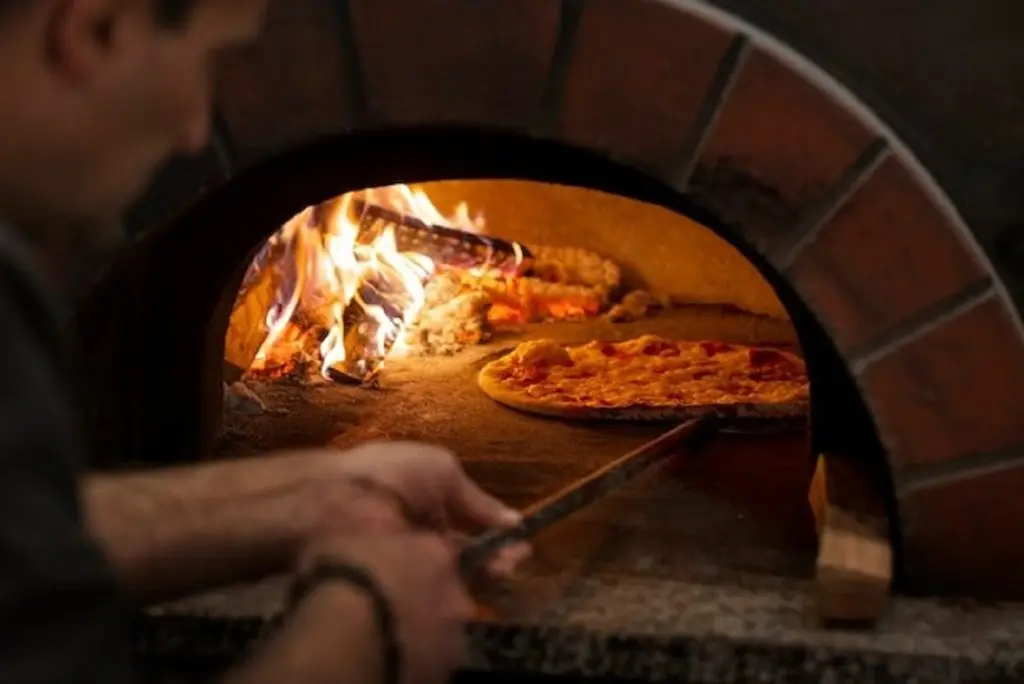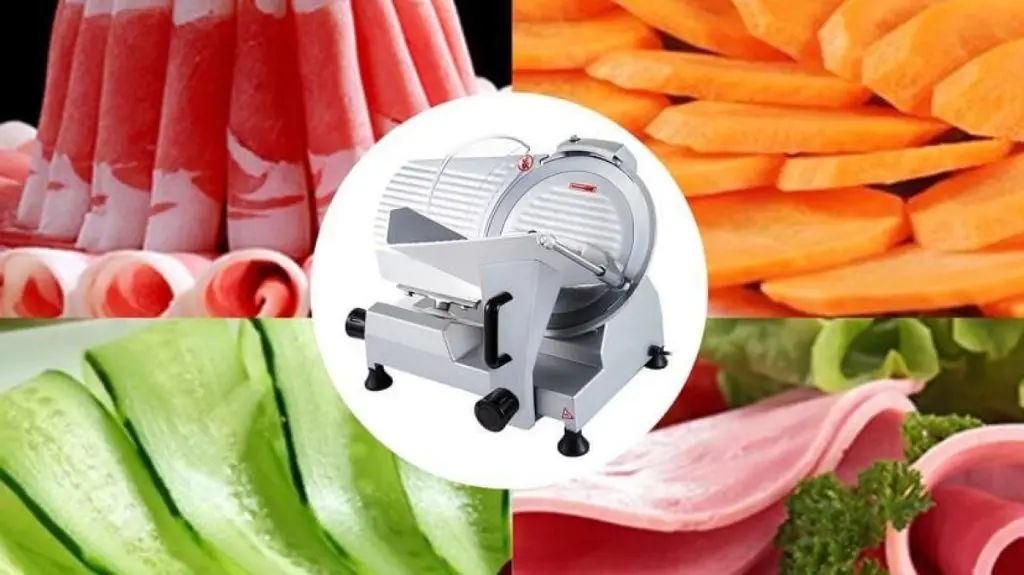Baking a pizza seems simple—spread the dough round, add cheese (a lot of it for me), layer some toppings, and toss it in a pizza oven.
And ding! Your pizza is ready.
But it might not be what you expected. It might be burned like a crisp or soggy with undercooked toppings because you are missing the essential ingredient of perfect pizza making—pizza oven cooking temperature.
A pizza oven can only cook the best pizza if you have set the best temperature for a pizza oven.
If the oven is too hot, it will burn up like a crisp; if it is not hot enough, the topping will be undercooked while the bottom will burn.
This might make you wonder how hot a pizza oven should be to cook the perfect pizza with charred crust, bubbling cheese, and a tantalizing aroma.
Well, there is no ideal pizza oven temperature—it varies depending on the type of oven and the cooking style. For detailed answers, continue reading.
In this comprehensive guide, we will delve into the science behind pizza oven temperatures, explore different types of pizza ovens and their temperature ranges, and unravel the secrets to achieving pizza perfection.
So, let’s get baking!
Table of contents
Why Do Pizza Ovens Need to be Hot?
The intense heat of a pizza oven is not merely a culinary whim; it’s a scientific necessity to achieve the delicate balance of flavors and textures in every pizza. To understand why high temperatures are crucial, let’s delve into the science behind the pizza-making process.
The Maillard Reaction
At the heart of pizza’s irresistible aroma and flavor lies the Maillard reaction, a complex chemical process that occurs between amino acids and sugars in food when subjected to high heat. This reaction is responsible for the crust’s golden-brown color, caramelized taste, and savory notes that enhance the pizza experience. During the Maillard reaction, the proteins in the dough denature and form a network of cross-linked bonds, giving the crust a crispy texture.
Balancing Oven Temperature and Cooking Time
The ideal pizza crust is a delicate balance of crispiness and char, a balance achieved through the precise interplay of temperature and time. High temperatures in a pizza oven enable rapid heat transfer to the dough, resulting in a quick rise and formation of air pockets within the crust. These air pockets and the Maillard reaction contribute to the crust’s airy and crispy texture. However, too much heat can lead to a burnt, blackened crust, ruining the pizza’s delicate balance.
Too much heat for too long can also rob the pizza toppings and sauce of moisture, potentially leaving the crust soggy if not managed properly, making it crucial that the pizza is cooked at the right temperature for the right amount of time.
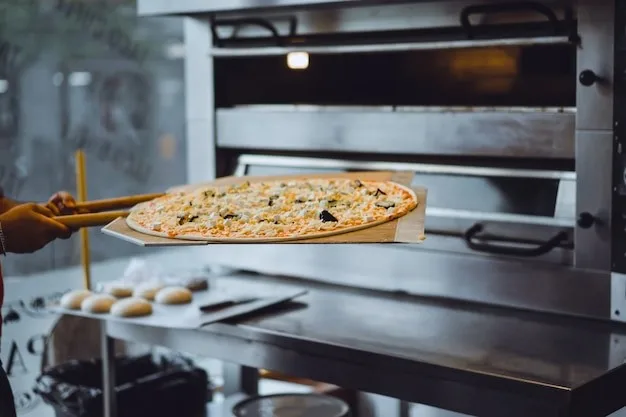
What Determines Pizza Oven Temperature?
The temperature inside a pizza oven is not a fixed constant but rather a dynamic interplay of various factors. Understanding these factors is crucial for achieving consistent and optimal results.
1. Fuel Type
The type of fuel used in a pizza oven significantly influences its temperature range and heat distribution characteristics. Wood-fired ovens, the traditional choice for Neapolitan pizza, typically reach temperatures between 850°F and 950°F. On the other hand, gas ovens offer more precise temperature control, with ranges typically ranging from 400°F to 700°F; for electric pizza ovens, the maximum temperature is 660°F.
2. Oven Design
The design of a pizza oven plays a crucial role in heat distribution and temperature maintenance. Wood-fired ovens, with their domed shape and refractory brick construction, retain heat effectively, allowing for even cooking and a consistent temperature throughout the baking process. Gas ovens also benefit from thoughtful design elements, such as strategically placed burners and heat reflectors. Electric pizza ovens, with their enclosed compartments and heating elements, provide the most consistent and controlled heat environment.
3. Insulation
Proper insulation is essential for maintaining a consistent pizza oven cooking temperature. Wood-fired ovens typically rely on refractory bricks’ thick, insulating properties, while gas and electric ovens often incorporate additional insulation layers to minimize heat loss.
Different Types of Pizza Ovens and Their Temperatures
There are different types of pizza ovens, each offering a unique set of features and a varying temperature range.
Wood-Fired Pizza Oven
Wood-fired pizza ovens, the original pizza-baking machines, have been revered for centuries for their ability to produce pizzas with a distinctive charred crust, blistered toppings, and an irresistible smoky aroma.
How Hot Does a Wood-Fired Pizza Oven Get?
Wood-fired pizza ovens typically reach temperatures between 850°F and 950°F, creating an intense heat environment that cooks pizzas in a matter of minutes. This VEVOR Wood-Fired Outdoor Pizza Oven can reach a maximum temperature of 1000℉ and can bake delicious pizzas in as little as 1-2 minutes.
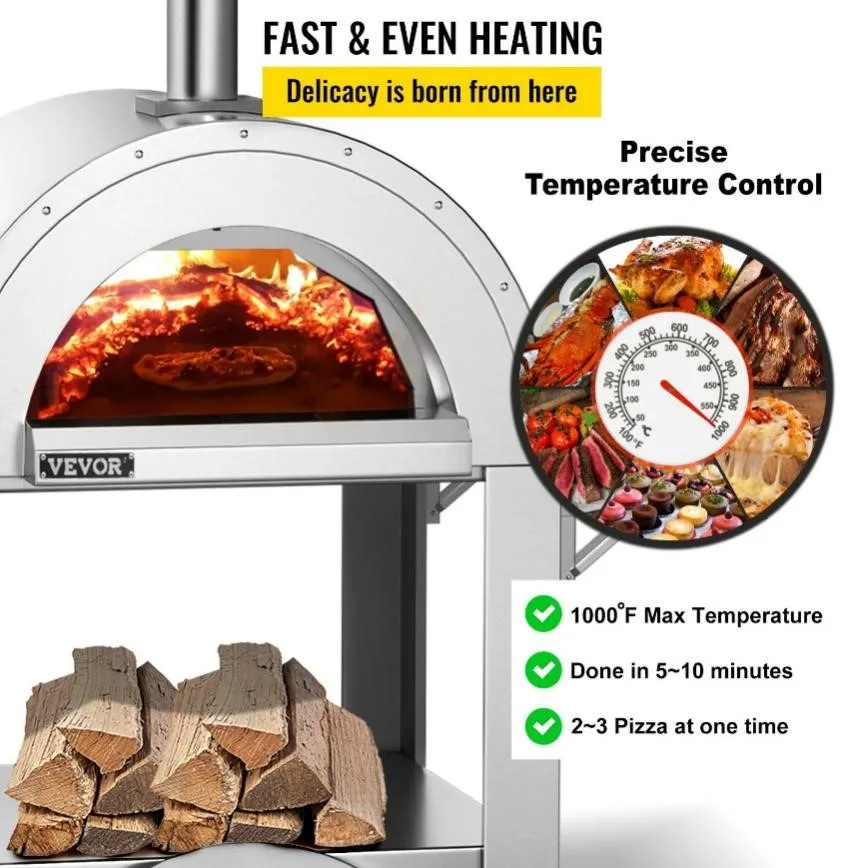
Gas Pizza Oven
Gas pizza ovens offer a balance between the traditional appeal of wood-fired ovens and the convenience of modern appliances. The versatility of gas ovens allows for experimentation with different crust thicknesses, toppings, and cooking times.
How Hot Does a Gas Pizza Oven Get?
Gas pizza ovens provide precise temperature control, typically ranging from 400°F to 700°F, making them suitable for a wider range of pizza styles beyond Neapolitan. This VEVOR Gas Pizza Oven allows you to set the temperature between 32℉ and 572℉.
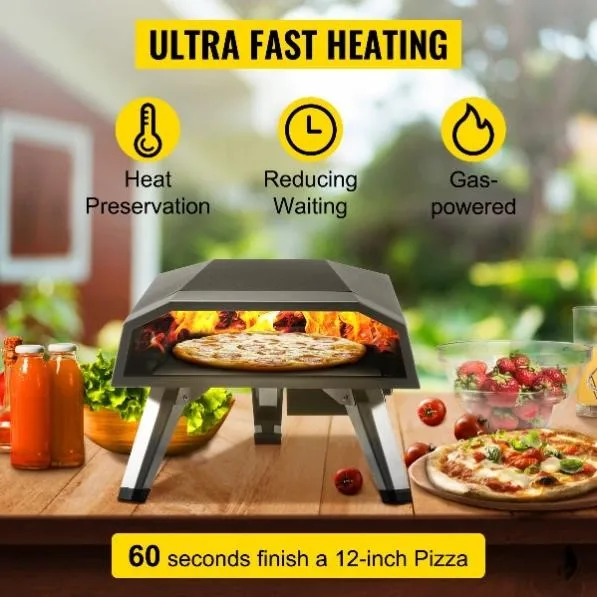
Electric Pizza Oven
Electric pizza ovens offer the most consistent and controlled heat distribution among the three types. The enclosed design and controlled heating elements of electric ovens make them a user-friendly option for home pizza enthusiasts and food establishments with limited pizza orders.
How Hot Does an Electric Pizza Oven Get?
Their temperature ranges typically fall between 350°F and 660°F, which may not reach the scorching heights of wood-fired ovens but will provide evenly cooked pizzas. This VEVOR Double Deck Commercial Pizza Oven offers 122℉-662℉ adjustable temperature.

How to Know If the Pizza Oven Is Hot Enough?
Determining whether a pizza oven has reached the optimal temperature for baking is crucial for achieving the desired crust texture and overall pizza flavor. While oven thermometers provide a numerical indication of temperature, visual cues, and practical techniques can also help assess oven readiness.
- Visual Cues: The color of the pizza stone or baking surface serves as a visual indicator of oven temperature. For wood-fired ovens, a white-hot stone or blackened surface signifies optimal heat levels. A light gray or slightly darkened surface in gas and electric ovens suggests that the oven is ready for pizza baking.
- Infrared thermometers: For a more precise measurement of the oven temperature, simply point the thermometer at the pizza stone or baking surface and record the temperature reading.
- The Flour Test: The flour test, a simple yet effective technique, involves sprinkling a small amount of flour onto the pizza stone or baking surface. If the flour immediately browns or scorches, the oven is too hot and requires further cooling. If the flour remains white or only slightly changes color, the oven is ready for pizza baking.
Ideal Pizza Oven Temperature for Different Styles
The ideal pizza oven temperature varies depending on the desired pizza style, as each style has its own unique characteristics and flavor profile. Here’s a breakdown of the recommended temperature ranges for some of the most popular pizza styles:
The Classic Neapolitan Pizza
Neapolitan pizza features a thin, crispy crust, slightly charred edges, and simple yet flavorful toppings. To achieve the authentic Neapolitan style, the ideal pizza oven temp will fall between 850°F and 950°F. These intense temperatures will cook the pizza quickly, resulting in a perfectly blistered crust and a soft, chewy interior.
New York-Style Pizza
New York-style pizza is larger with a thicker crust and generous toppings. For this style, the best temperature for a pizza oven is between 500°F and 600°F, which is ideal. These temperatures allow for thoroughly cooking the thicker crust while keeping the toppings from burning.
Chicago-Style Deep Dish
Chicago-style deep-dish pizza offers a deep, buttery crust, layers of gooey cheese, and chunky toppings. A pizza oven cooking temperature range of 450°F to 500°F is recommended to achieve the signature deep-dish texture.
FAQs About Pizza Ovens Temperature
1. Are Pizza Ovens Hotter Than Regular Ovens?
Yes, pizza ovens typically reach much higher temperatures than regular ovens. Conventional kitchen ovens typically have a maximum temperature of around 500°F, while pizza ovens can reach temperatures of 950°F or even higher.
2. Is It Okay To Use a Baking Tray When Cooking Pizza?
While baking trays can be used for cooking pizza, they will not produce the same results as a pizza stone. Baking trays can conduct heat less effectively than pizza stones, resulting in a softer, less crispy crust. That said, baking trays are widely used for baking pizzas in home ovens.
3. Can a Pizza Oven Be Too Hot?
Yes, a pizza oven can be too hot, and excessively high temperatures can burn the toppings and result in an overall unpleasant texture and flavor of the pizza.
Conclusion
Mastering the art of temperature control is key to achieving the delicate balance of flavors and textures in every pizza. By understanding the science behind high pizza oven temperatures, the factors influencing heat distribution, and the ideal temperatures for different pizza styles, you can learn how hot a pizza oven should be to produce perfect pizza. Use the recommended pizza oven cooking temperature ranges as a starting point and experiment with different crust thicknesses and toppings to find the ideal pizza oven temp for your unique style.

